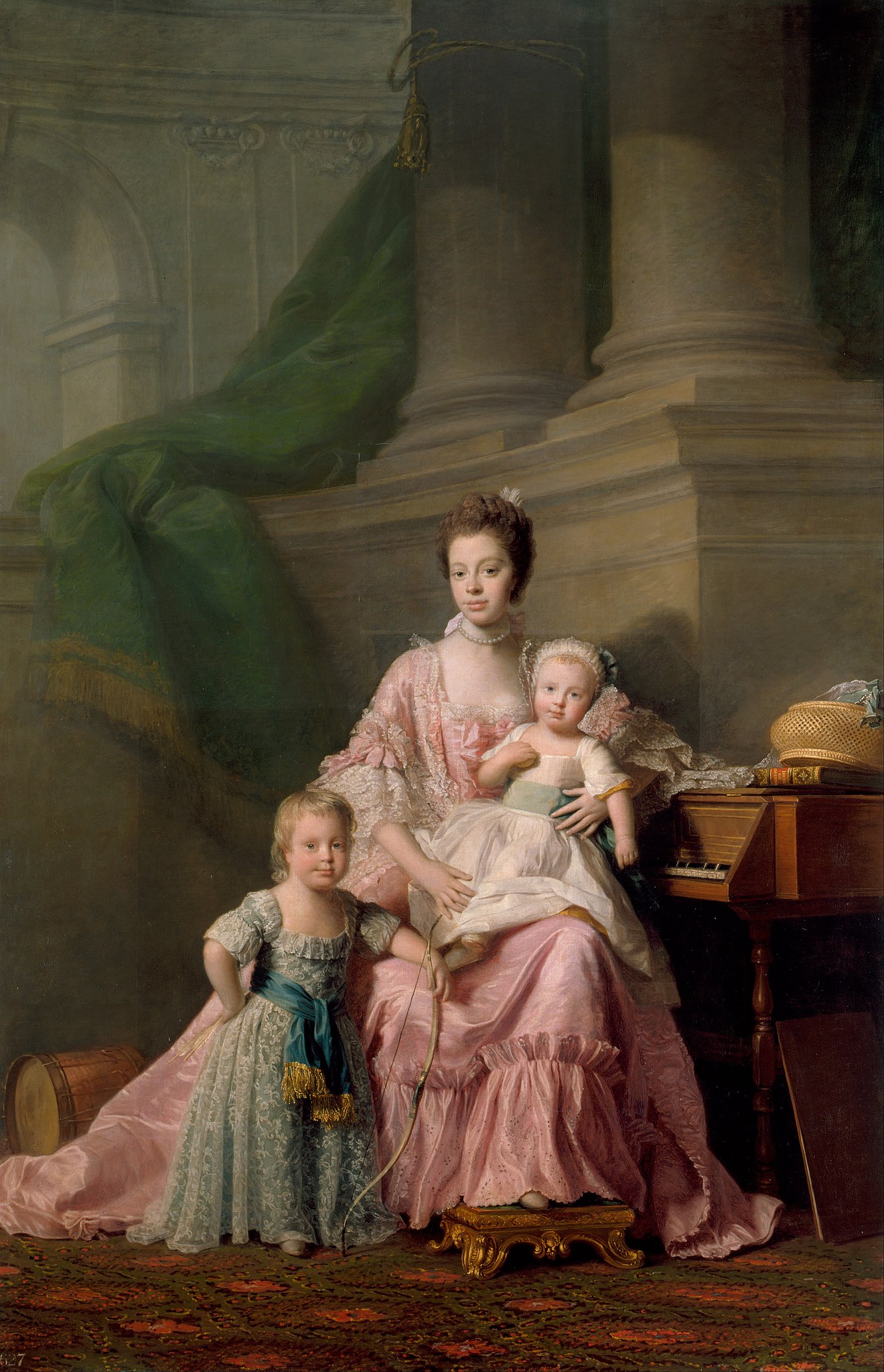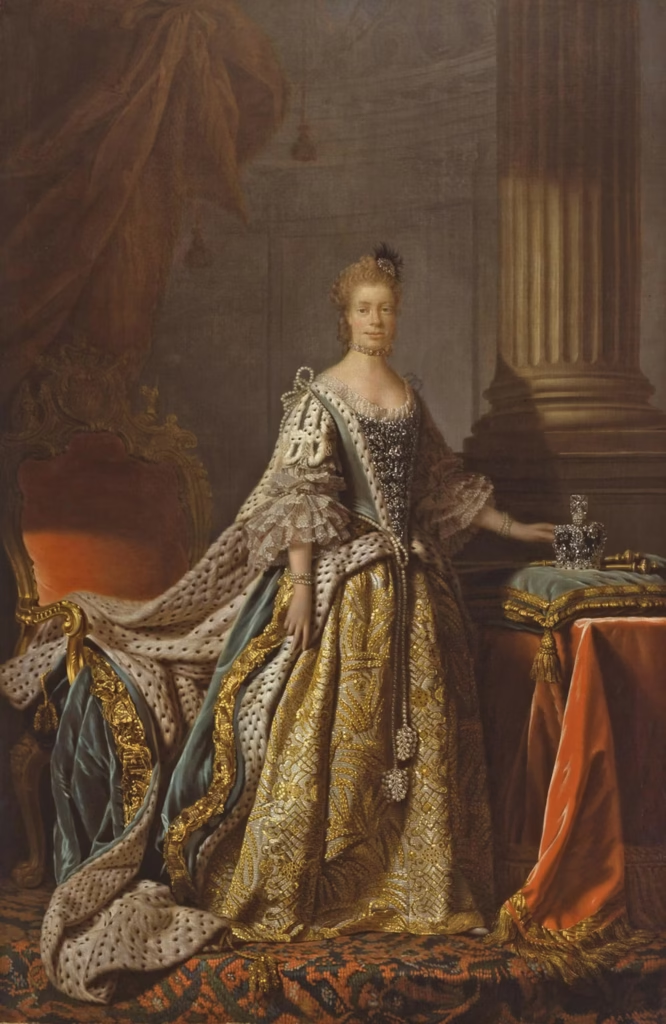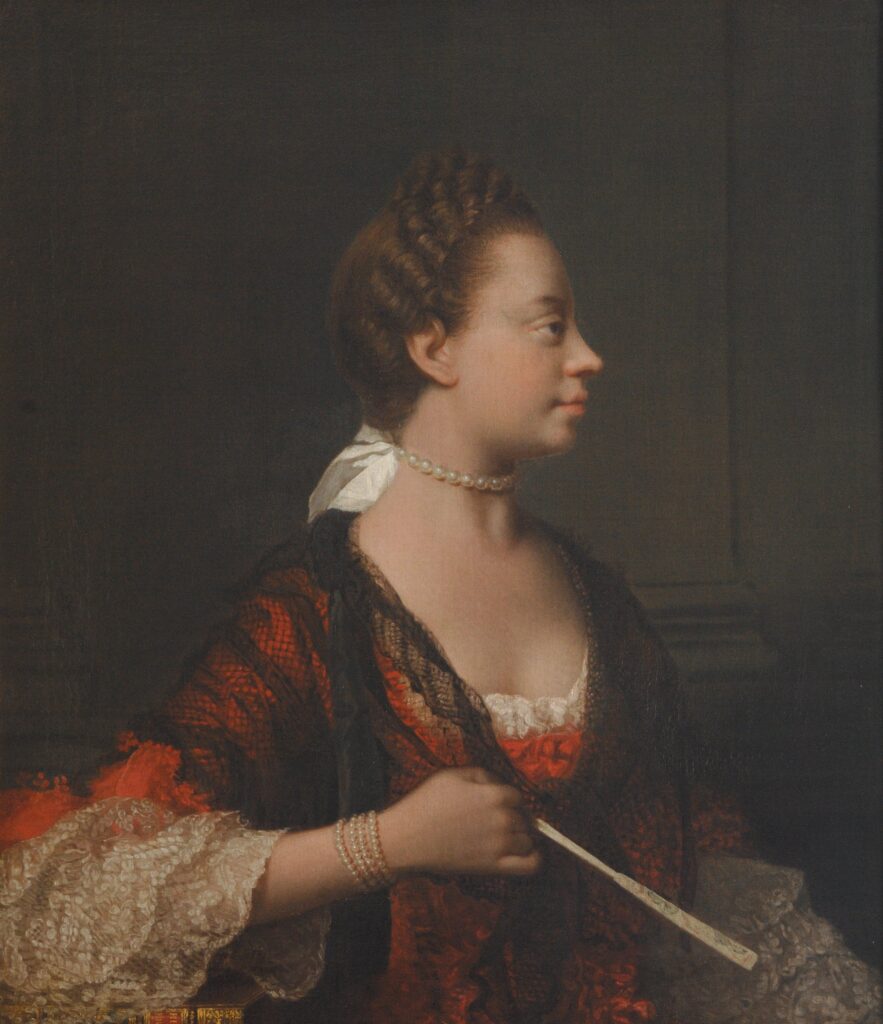Queen Charlotte: Britain’s First Black Queen? The Real Story Behind the Controversy and the Crown

Introduction
For centuries, Queen Charlotte of Mecklenburg-Strelitz, wife of King George III of Great Britain, was a relatively obscure figure in royal history. But in recent years, she has been thrust into the spotlight by claims that she may have been Britain’s first Black or biracial queen.
The idea gained widespread attention thanks to modern scholarship, artistic portrayals (notably in Netflix’s Bridgerton and Queen Charlotte: A Bridgerton Story), and renewed public interest in colonial-era racial identities. But how much of the claim is historical fact, and how much is speculation or cultural reinterpretation?
This article explores the full story of Queen Charlotte, examining her life, ancestry, legacy, and the debate over her racial identity—within the broader context of race, royalty, and representation.

Early Life and Background
Birth and Heritage
Charlotte Sophia of Mecklenburg-Strelitz was born on May 19, 1744, in the small German duchy of Mecklenburg-Strelitz. Her family belonged to the minor German nobility. In 1761, at the age of 17, she married King George III of Great Britain, becoming Queen Consort during a time of immense global change—the American Revolution, industrialization, and the rise of the British Empire.
She spoke German and French and quickly adapted to English customs. Known for her modesty and intelligence, she bore 15 children, including King George IV and Prince Edward, father of Queen Victoria.
Her Role as Queen
Public Image and Influence
Queen Charlotte was not a politically dominant queen, but she was influential in the arts, science, and education. She supported composer Johann Christian Bach, the Royal Academy, and botanical research (Kew Gardens flourished under her patronage).
She also had a keen interest in philanthropy and education, founding orphanages and women’s hospitals.
Personal Life
Her marriage to George III was initially harmonious. However, the king’s mental illness (often attributed to porphyria) led to long periods of distress and isolation for the queen in later years. She spent her final years largely out of public life and died on November 17, 1818.
Was Queen Charlotte Black? The Origins of the Theory
The theory that Queen Charlotte had African ancestry was first seriously explored by historian Mario de Valdes y Cocom, a Jamaican-American researcher. In the 1990s, he claimed that Charlotte was descended from a 13th-century African Moorish noblewoman, Madragana, who was a mistress of King Afonso III of Portugal.
Key Arguments in Favor:
- Genealogical Link: Through Madragana, Queen Charlotte’s ancestry can be traced back to a Portuguese noble family, which Valdes argues had “African” (specifically Moorish) lineage.
- Contemporary Descriptions: Artists and courtiers allegedly described her with features such as a “wide nose” and “thick lips,” which some modern interpreters view as evidence of African ancestry.
- Portrait Analysis: Certain portraits (especially those by Allan Ramsay) show Queen Charlotte with darker skin or facial features that appear more ethnically ambiguous than typical Northern European royals.
Counterarguments and Scholarly Criticism
Genealogical Distance
- The Madragana connection is 13 to 15 generations removed from Queen Charlotte, which would account for a minuscule genetic contribution, if any.
- Moreover, the racial classification of “Moors” is complex—Moorish people were Muslims from North Africa, and not all were Black or Sub-Saharan in origin.
Artistic Interpretation
- Many of the more “ethnically ambiguous” portraits of Charlotte were idealized or stylized, and artistic conventions of the time varied widely.
- Most official royal portraits show her with light skin, typical of European royalty.
Contemporary Descriptions
- Descriptions of Queen Charlotte’s features are inconsistent and often reflect the language of aesthetic preference or political criticism rather than racial categorization.
- The term “mulatto” or “Black” was never applied to her in her lifetime by British or foreign dignitaries.
Cultural Reinterpretation in Modern Media
The discussion exploded into mainstream culture thanks to Shonda Rhimes’ “Bridgerton” series (2020) and its 2023 spin-off, “Queen Charlotte: A Bridgerton Story.” In these shows, Queen Charlotte is portrayed by Golda Rosheuvel, a biracial actress, and the show treats her heritage as part of a fictionalized alternate history.
This representation is deliberately revisionist, aiming to reflect modern themes of race, visibility, and diversity rather than historical accuracy.
Symbolic Impact and Representation
Whether Queen Charlotte was truly of African descent is still debated among scholars. Yet her story has become a symbol of representation for many in the Black British and African diaspora communities.
She serves as a cultural touchstone in conversations about:
- The visibility of Black figures in European history
- Racial diversity in aristocratic and royal circles
- How historical narratives are shaped by modern values
Some historians argue that her story offers a useful framework for discussing racial identity in history, even if the core claim remains speculative.
Legacy and Memory
Today, Queen Charlotte’s legacy lives on in various ways:
- Charlotte, North Carolina, is named after her.
- Statues, portraits, and cultural festivals have honored her across the UK and U.S.
- Historians continue to explore her ancestry, not just for racial insights, but for a deeper understanding of identity in monarchy and colonial times.

Conclusion
Queen Charlotte was a devoted consort, mother, and patron of the arts who played a significant role in 18th-century Britain. While the evidence for her African ancestry remains inconclusive and controversial, her story has become a powerful lens for exploring how we define race, heritage, and history.
Whether or not she was Britain’s first Black queen, Queen Charlotte has become a modern symbol of inclusion, reinterpretation, and the evolving understanding of identity—both royal and human.




